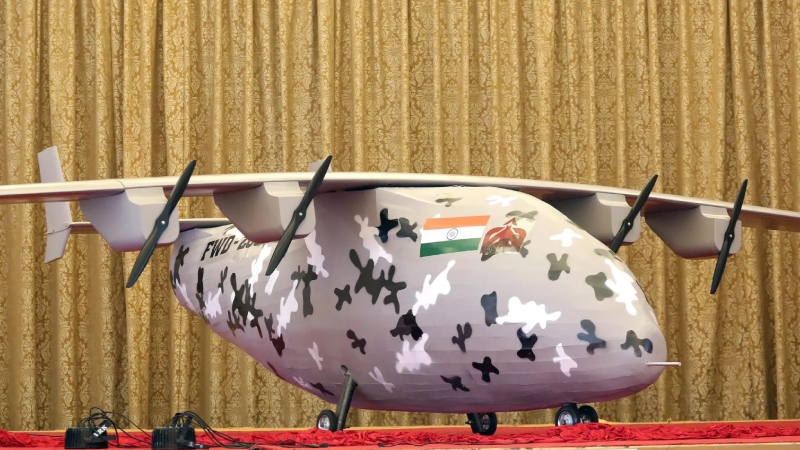
Historic moment for India's defense industry
FWD-200B, India’s first indigenous bomber UAV unveiled in Bengaluru
FWD-200B stands as a medium-altitude, long-endurance (MALE) UAV
In a historic moment for India’s defense industry, Flying Wedge Defence and Aerospace Technologies, a pioneering Indian defense and aerospace company, proudly unveiled the FWD-200B, India’s first indigenous bomber UAV in Bengaluru. This cutting-edge creation is hailed as the nation’s inaugural indigenous bomber unmanned aerial vehicle (UAV), marking a significant leap in India’s aerospace capabilities.
What is FWD-200B?
Designed and manufactured entirely within India, the FWD-200B stands as a medium-altitude, long-endurance (MALE) unmanned combat aerial vehicle. With a robust payload capacity of 100 kgs, it is equipped to carry optical surveillance payloads and precision air-strike weapons, making it a versatile asset for defense operations.
Speaking at the unveiling ceremony, Suhas Tejaskanda, the visionary founder of Flying Wedge Defence, reportedly emphasized the fulfillment of India’s longstanding aspiration to develop a combat UAV domestically.
Notably, the FWD-200B achieves this milestone with remarkable cost efficiency. While imported counterparts such as the US Predator drone command exorbitant prices nearing Rs 250 crore, the domestically crafted FWD-200B offers comparable capabilities at just Rs 25 crore.
With an impressive endurance spanning 12-20 hours, a top speed of 200 kts/370 kmph, and a ground control station range of 200 km, the FWD-200B emerges as the nation’s sentinel in the skies. This unveiling not only bolsters India’s Make in India initiative but also reduces reliance on costly imports for critical defense equipment like UAVs, signaling a pivotal moment in India’s quest for self-reliance in defense technology.

Historic moment for India's defense industry
FWD-200B, India’s first indigenous bomber UAV unveiled in Bengaluru
FWD-200B stands as a medium-altitude, long-endurance (MALE) UAV
In a historic moment for India’s defense industry, Flying Wedge Defence and Aerospace Technologies, a pioneering Indian defense and aerospace company, proudly unveiled the FWD-200B, India’s first indigenous bomber UAV in Bengaluru. This cutting-edge creation is hailed as the nation’s inaugural indigenous bomber unmanned aerial vehicle (UAV), marking a significant leap in India’s aerospace capabilities.
What is FWD-200B?
Designed and manufactured entirely within India, the FWD-200B stands as a medium-altitude, long-endurance (MALE) unmanned combat aerial vehicle. With a robust payload capacity of 100 kgs, it is equipped to carry optical surveillance payloads and precision air-strike weapons, making it a versatile asset for defense operations.
Speaking at the unveiling ceremony, Suhas Tejaskanda, the visionary founder of Flying Wedge Defence, reportedly emphasized the fulfillment of India’s longstanding aspiration to develop a combat UAV domestically.
Notably, the FWD-200B achieves this milestone with remarkable cost efficiency. While imported counterparts such as the US Predator drone command exorbitant prices nearing Rs 250 crore, the domestically crafted FWD-200B offers comparable capabilities at just Rs 25 crore.
With an impressive endurance spanning 12-20 hours, a top speed of 200 kts/370 kmph, and a ground control station range of 200 km, the FWD-200B emerges as the nation’s sentinel in the skies. This unveiling not only bolsters India’s Make in India initiative but also reduces reliance on costly imports for critical defense equipment like UAVs, signaling a pivotal moment in India’s quest for self-reliance in defense technology.
